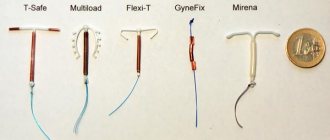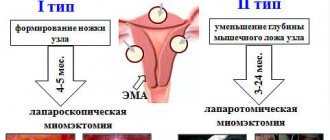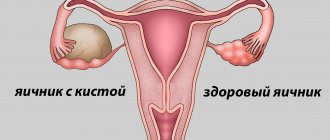Caesarean section is an abdominal operation for artificial delivery. Despite the rapidly growing popularity of this method in recent years, cesarean remains a serious type of surgical intervention, which requires high professionalism of doctors, a responsible approach of all medical staff and a conscious attitude of the woman herself.
Therefore, it is quite natural that pregnant women (or those preparing to become mothers for the first time or again) are interested in how many times a caesarean section can be performed. Let's try to figure out this exciting and extremely important question.
C-section
This manipulation a few centuries ago led to irreversible consequences and the death of a woman. The whole point is that the doctors did not suture the uterine cavity, but connected only the upper tissues. The new mother died within a few hours from severe blood loss.
Now everything has changed. Medicine has made a leap forward. Many women, even in the absence of indications, want their babies to be born in this way. The procedure is performed under anesthesia, using one of several types of anesthesia. During the procedure, the doctor cuts the lower part of the peritoneum, opens the uterus and removes the baby. Later, all wounds are sutured in layers.
If you have already had a C-section, should you have a C-section in future pregnancies?
No, you do not need to have a C-section in future pregnancies if your previous C-section was a low transverse (almost horizontal) incision in the uterus.
You may be wondering why the location of the cut matters. According to the American College of Obstetricians and Gynecologists (ACOG), the type of uterine incision you made in a previous cesarean section can determine your future birth because some uterine scars are more likely to cause rupture during a vaginal birth after a cesarean section.
With a low vertical and high vertical incision, the risk of rupture is higher than with a low transverse uterine incision.
ACOG reports that people with a history of C-section have two future birth options: a planned C-section or a vaginal birth after a C-section. If your previous cesarean section was a low incision, your doctor may discuss trying to give birth after a cesarean section with you.
The choice will depend on why the first caesarean section was performed.
For example, a person who has a breech C-section has an 80 percent chance of success compared to a person who is fully dilated, pushes for 3 hours, and then has a C-section - then has a less than 33 percent chance of success. .
So, a vaginal birth after a cesarean section is not always possible, and yes, sometimes subsequent pregnancies must also be followed by a cesarean section. And this possibility leads to the question of how many C-sections are considered safe.
How many times can you have a caesarean section?
The opinion of doctors on this issue is ambiguous. Rather, it all depends on the individual characteristics and state of the body of the expectant mother. Some ladies easily tolerate the procedure and decide to carry out the third, fourth and fifth birth of the baby this way. Other representatives of the fair sex have too much trouble recovering from surgery and realize that once is enough for them. Let's consider different sides of this issue.
Can a caesarean section have a negative impact on the baby?
Slow movement along the birth canal during natural childbirth is a gradual transition from intrauterine to extrauterine existence. It allows the child to gradually “turn on” the necessary adaptation mechanisms. The “caesareans” do not have enough time to adapt to the changed environmental conditions, so at the stage of primary adaptation they have a somewhat more difficult time. But this is a temporary process; such children quickly adapt to the world around them.
Use of anesthesia
An anesthetic is always used during surgery. Anesthesia can be general or epidural. In the first case, the woman is sleeping and sees nothing around. Epidural anesthesia allows you to understand, see and hear everything, but not feel pain at all. How many times can a caesarean section be performed if we are talking about anesthesia?
Doctors say that no pain relief leaves its mark on human health. On average, one anesthesia takes about five years of life. That is why doctors and anesthesiologists strongly do not recommend using such anesthesia more than 5-6 times throughout your life. The only exceptions are those cases when anesthesia is vital.
What is the current situation with the risks of caesarean section?
If surgical delivery were as dangerous as it was 15 or 10 years ago, when it was considered the only way out of a difficult situation rather than the norm, then modern gynecologists and obstetricians would simply not allow mothers to choose this option if possible (or even though would try) natural childbirth. But they increasingly agree with this desire, and sometimes even recommend a caesarean section themselves! This is because medicine does not stand still and the risks of such an operation are reduced every year.
But progress in medicine can not only minimize the negative impact on the child and ensure the safety of his health or speed up the recovery process for the mother. It can also allow you to have more children through sectioning than you would have dreamed of just a decade ago. Instead of a maximum of two sections, you can now count on a maximum of 5 operations, although you cannot do without some nuances and a fly in the ointment.
From the reproductive organ
How many times can you have a caesarean section? The female uterus is designed in such a way that it is capable of bearing and reproducing about 5 children in its entire life. However, many women have 7-13 babies and safely give birth to all subsequent ones.
Doctors believe that a sixth child is already a big risk for a woman. Over time, the reproductive organ stretches and loses its elasticity. However, with age this happens to all muscles of the human body. Particular danger arises when the uterus has several scars. With each subsequent pregnancy, the risk that the reproductive organ simply ruptures ahead of time increases.
For women's health
How many times can you have a caesarean section without harming your health? This procedure is a surgical intervention, after which the new mother needs long-term recovery and rehabilitation. Also, a woman needs to gain strength as soon as possible in order to take care of the baby. All this is quite difficult.
With each subsequent operation, the recovery period only increases. This is why it becomes increasingly difficult for a woman to rehabilitate herself and return to her duties. On average, a healthy representative of the fairer sex is able to undergo 3-4 such operations.
What do doctors say?
Regarding how many times a caesarean section can be performed, reviews from obstetricians, surgeons and gynecologists report the following: the manipulation should not be performed more than two or three times. All because of the complexity of the operation and the risk for the woman.
The fact is that during a cesarean section, not only the layers of the peritoneum are cut, but also the area of the genital organ in a certain place. Doctors cannot choose a new segment for each operation. Doctors have to carefully open the already stitched hole. All this is a great risk both for the woman herself and for her subsequent children.
Some women, after the third operation, have the fallopian tubes sutured. This is a reliable method of protection and a guarantee that you will never have to go to the operating table for a caesarean section again.
How long should you wait to get pregnant after a caesarean section?
The length of time you should wait to become pregnant again after a cesarean section will depend on several factors.
However, the U.S. Department of Health and Human Services recommends waiting at least 12 months for any type of birth, and that's the minimum. If you get pregnant again before 1 year of age, you increase the likelihood that your new baby will be born too early.
You may need an even longer period between giving birth and your next pregnancy. To give your body enough time to recover, your doctor may say 18 months is the minimum. But doctors don’t have exact numbers or a consensus.
A 2021 study found that people of all ages have an increased risk of adverse pregnancy outcomes with shorter pregnancy periods.
These shorter periods of time were defined as 6 months compared to 18 months. Based on their findings, the researchers suggest a range of 12 to 24 months between pregnancies, with 18 months being the ideal time.
What can you say about animals?
How many times can a dog have a caesarean section? Veterinarians and surgeons do not give any special restrictions. If the animal is young and has no health problems, then the procedure can be performed if necessary. Most dogs give birth on their own after surgery. There is rarely a need for a repeat cesarean section.
Just recently...
The fashion for caesarean section appeared literally 5-6 years ago, and 15 years ago, childbirth by caesarean section would have made you worry. Although there was no direct threat to the life of mother and baby even then, this method was treated as a full-fledged abdominal operation, which could lead to serious complications. It was believed that a cesarean section greatly harmed the baby, forcing him to be born in an unnatural way, but for mothers, a repeat cesarean was an even greater risk than the first. Doctors argued: it is impossible to resort to this operation more than twice, and subsequent operations can have a positive outcome only with incredible luck. But if cesarean is so unpreferable from the point of view of the health of mother and baby, as well as further family planning, then why is the number of births through section now higher than the number of natural ones?
Summarizing
So, from all of the above, what can be concluded? How many times can a woman have a caesarean section?
If there are no specific indications, then it is better to refuse manipulation altogether and give birth naturally. However, there are cases when a woman has health problems and doctors do not allow her to have a natural birth. In this case, it is better to perform the operation no more than two or three times in a lifetime. In this case, a sufficient break between manipulations is a prerequisite. Doctors say that after the operation, pregnancy should occur no earlier than two years later. The longer the break, the stronger the suture on the uterus will be during pregnancy, and therefore, the lower the risk of complications.
Remember that no caesarean section goes without a trace. Always plan your future and keep women's health under control.
Indications and features of the operation
The main indications for surgical delivery include the following:
- failure of the scar on the uterus after a previous operation;
- obstacles to the birth of a child through the natural birth canal (narrow pelvis, deformation of the pelvic bones, tumors);
- large fruit;
- abnormal positions of the fetus (including breech presentation of the fetus);
- multiple pregnancy;
- placenta previa;
- acute fetal hypoxia;
- pathology of labor that cannot be corrected;
- bleeding during pregnancy and childbirth, threatening the life of the woman and the fetus.
A planned caesarean section is performed at a time as close as possible to the expected date of birth. During the operation, the surgeon cuts the anterior abdominal wall, spreads the muscles and makes an incision in the uterus, after which he opens the amniotic sac and removes the baby. At the next stage, the placenta is removed and the integrity of the tissue is restored by applying sutures.
Depending on the location, there are two types of external incision:
- Transverse (horizontal). It is performed in the form of an arc above the pubis and in most cases is sutured with a self-absorbing cosmetic suture. Combined with a transverse incision in the lower segment of the uterus.
- Longitudinal (vertical). The anterior abdominal wall is dissected along the entire surface from the navel to the lower abdomen. The incision on the uterus can be longitudinal or transverse, depending on the characteristics of the operation. In this case, applying a cosmetic suture is impossible due to the high risk of its rupture under load.
The most commonly used anesthesia is regional (epidural) anesthesia, which acts only on the lower part of the body and allows the patient to remain conscious throughout the entire process. In emergency cases, general anesthesia is used, the effect of which occurs much faster.










